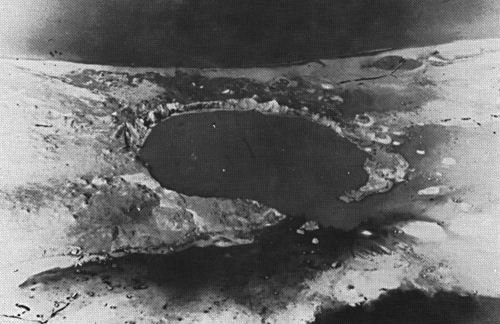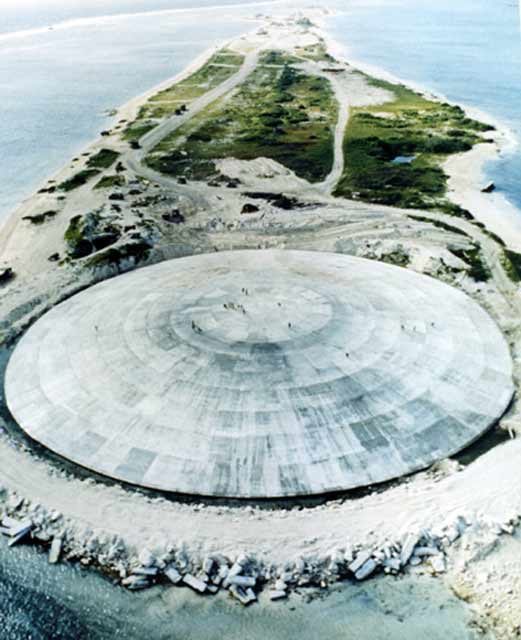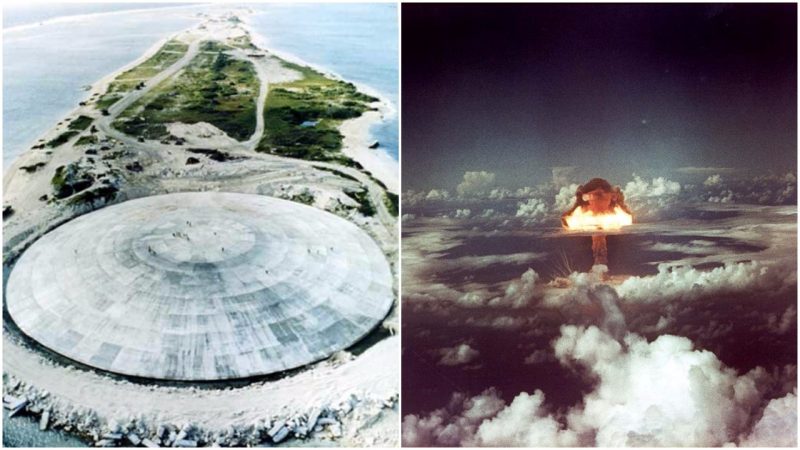Following the end of World War Two, which concluded with the atomic bombs that devastated Hiroshima and Nagasaki, several world powers proceeded with developing different types of nuclear warheads. Such warheads have been produced mainly as strategic and tactical weapons, especially amid the upheaval of the Cold War, but luckily, no country has used any to attack another.
Developing nuclear warheads, however, meant performing tests on various sites across our planet, including the Earth’s soils, oceans, and atmosphere. In the time-span of five decades, between the early 1940s and early 1990s, the United States alone carried out more than 1,000 nuclear detonations. Other countries have smaller numbers, such as the United Kingdom with a history of 88 tests, mostly in the atmosphere. France has performed a little over 200 tests.

Fortunately, more tests were prevented after the Comprehensive Nuclear-Test-Ban Treaty was signed in 1996. Although the United States is one of the parties that never actually ratified this international treaty, the country officially stopped all weapon tests that involved nuclear explosions. But some sites are here to remind us all of the unwanted legacies of the Cold War.
From Colorado and New Mexico to some remote points in the mid-Pacific, there are a group of locations where the U.S. conducted its nuclear tests. The two major sites where nuclear blasts have flourished are the Nevada Test Site and the Pacific Proving Grounds in the proximity of Micronesia’s Marshall Islands. Of the latter, two locations to remember are the famous Bikini Atoll and the less-known one, Enewetak Atoll. Both have been the scenes of dozens of detonations in the first decades of the Cold War.

The specific atolls were selected due to their remoteness in the mid-Pacific, far away enough from Hawaii and Australia. Following the end of World War Two and until 1958, some 67 nuclear bombs deformed and contaminated both Bikini and Enewetak Atolls.
The year of 1958 must have been particularly bad for the entire area, when a series of 35 U.S. nuclear tests took its course here. Named “Operation Hardtack 1,” the activities counted more detonations than all previous ones carried in the Pacific combined together. All of them amounted to an unprecedented amount of radioactive fallout and nuclear debris which needed to be removed in order to avoid further contamination and to prevent jeopardizing ecosystems in the Pacific.
It took nearly a decade of cleaning efforts, which were handled by the U.S. Defense Nuclear Agency, to remove affected topsoil in the area and assemble the remaining radioactive debris. A large crater that was left from test bombs at Runit Island (part of Marshall Island’s Enewetak Atoll) was later used to store the dangerous debris.

According to the Guardian, roughly 111,000 cubic yards of radioactive debris from Operation Hardtack has been covered with a concrete dome. The site is famously also called the “Cactus Dome,” and some of the debris here includes the super-malicious fissile isotope plutonium-239, used in nuclear warheads.
Looking as if it were a downed space vessel, the 18-inches-thick dome on Runit Island was supposed to prevent the giant pile of radioactive debris from spilling into the oceans. However, various parties have raised concerns that the dome was not properly doing the job that it was designed to do; some believe radioactivity has still managed to penetrate the soils and the area surrounding the concrete structure. Others also believe that leaking has caused severe, irrevocable damage and contamination to the island’s wildlife.

According to 2013 statements by U.S. officials, the radioactive material inside the dome does not pose an imminent threat to the surrounding ocean waters. For others, even if the dome were to utterly collapse and leak all its toxic contents, no significant changes should follow, as everything is supposedly already contaminated.
For peoples living on neighboring islands, nearest to this disturbing reminder of the Cold War days, there is certainly a dose of fear that the dome will one day crack open and spill everything in the ocean, causing more contamination and other frightening consequences. Some are particularly afraid that such event might follow if the ocean water levels continue to rise due to climate change, or because of an unprecedented catastrophic event in nature such as a typhoon.
